#duchess of aosta
Explore tagged Tumblr posts
Text




"Be humble and charitable. Disregard human riches which by a stroke of adverse fortune can be lost from one moment to another. Love virtue and love study. They are the greatest aids in life. Learn to do good for good's sake, never for vain glory."
- Carlo Emanuele dal Pozzo to his daughter Maria Vittoria



"She has a face with pronounced and beautifully correct features, the sparkle in her eyes is special and her penetrating gaze, her voice is sweet and affectionate, and her conversation is instructive and entertaining, and her presence inspires, along with the deepest respect, the most affectionate sympathy. Although we have all heard about the great qualities that adorn her, reality exceeds our hopes and we all left captivated of what would be the Queen of Spain."
(Tiene un rostro de rasgos pronunciados y bellamente correctos, el brillo de sus ojos es especial y su mirada penetrante, su voz es dulce y cariñosa, y la conversación instructiva y amena, e inspira su presencia, al par que el más profundo respeto, la más afectuosa simpatía. Aunque todos hemos oído hablar las grandes cualidades que la adornan, la realidad supera nuestras esperanzas y todos salimos prendados de la que había de ser la Reina de España.)
- Víctor Balaguer writes about Maria Vittoria


"In Spain I only wanted one thing: to do my duty, and I will always keep a good and sad memory of her. Good, because there are very esteemed people there whom I will never forget, and sad, because Spain did not find with us the tranquility and prosperity that we wanted to give her."
(En España no deseé más que una cosa: cumplir con mi deber, y de ella conservaré siempre un bueno y un triste recuerdo. Bueno, porque hay allí personas muy estimables a las que nunca olvidaré, y triste, porque España no encontró con nosotros la tranquilidad y la prosperidad que deseábamos darle.)
- María Vittoria dal Pozzo to Spanish friend

Maria Vittoria dal Pozzo committed herself for all her life (alas short, she died at only twenty-nine years old as a result of tuberculosis) in countless works of assistance in favor of the poor and the dispossessed so much to be remembered as "The Queen of Charity".
#women in history#maria vittoria dal pozzo#queen maria victoria of spain#duchess of aosta#princess della cisterna#spanish history
40 notes
·
View notes
Text

Princesse Hélène Louise Henriette of Orléans, Duchess of Aosta
Italian vintage postcard
#postal#italian#vintage#postkaart#ansichtskarte#photo#aosta#princesse#hélène louise henriette#tarjeta#ephemera#orlans#henriette#sepia#postkarte#carte postale#briefkaart#aosta italian#orléans#photography#duchess#louise#postcard#historic#hlne
10 notes
·
View notes
Text
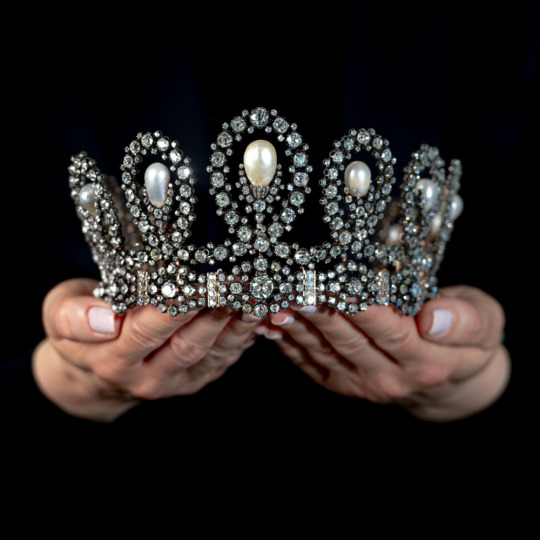


Magnificent and Historic Natural pearl and diamond tiara/necklace
"One of the most important tiaras to appear at auction in recent years, this royal tiara dates to the second half of the 19th century. Steeped in the rich history of the House of Savoy, this tiara hails an extraordinary provenance. Likely to have been presented to Maria Vittoria dal Pozzo in 1867 as a wedding gift on the occasion of her marriage to Amedeo of Savoy, Duke of Aosta, later elected King of Spain as Amadeo I (1870- 1873), the tiara, which has remained with the family for over 150 years, is believed to have been created by Musy Padre e Figli – Court Jeweller of Turin, and one of the oldest goldsmiths in Europe.
Composed of graduated scroll motifs set with cushion-shaped, circular- and single-cut diamonds, framing eleven slightly baroque drop-shaped natural pearls, the jewel has more recently been seen worn as an elegant necklace.
The tiara is designed as a succession of eleven graduated scroll motifs, each composed of a natural pearl surrounded by old cut diamonds. The surmount rests on a detachable band composed of cluster and bar motifs set with cushion-shaped diamonds. The scroll motifs are detachable and may be adapted and worn as a necklace. The tiara, which was created by Musy, belonged to Maria Vittoria Carlotta Enrichetta Giovanna dal Pozzo della Cisterna (1847-1876), Duchess of Aosta and Queen of Spain."
Sotheby's
#sotheby's#sothebys#spanish royal family#italian nobility#italian royal family#tiara#tiaras#diadem#diadems#necklace#convertible#diamond#diamonds#pearl#pearls#tiara crown#tiaras crowns#tiarascrowns#tiaracrown
169 notes
·
View notes
Note
Any tiara predictions for all the upcoming state banquets? Hoping for Queen Fabiola’s Spanish Wedding Gift Tiara on Queen Mathilde🤞🏼🤞🏼🤞🏼
@potofhoneypieceofstardust asked: Hello! Do you have any tiara predictions/wishlists for the upcoming state banquets?
Sorry, this is cutting it close!
Luxembourg to Belgium
Like you I really want to see Queen Fabiola's Spanish Wedding Gift Tiara. I would prefer the wreath version with aquamarines but I will take any proof that the tiara still exists and belongs to the royal family. Realistically, Queen Mathilde will probably wear the full version of the Nine Provinces Tiara.
I want Princess Astrid to wear the Savoy-Aosta Tiara because every time she wear's Queen Elisabeth's Diamond Bandeau Tiara I lose a little hope that it will remain in the main line of the family.
I'm sure Grand Duchess Maria Teresa will wear the Belgian Scroll Tiara because that's the only tiara she wears anymore and it has the Belgium connection.
Spain to the Netherlands
I want Queen Letizia to wear Queen Ena's Diamond & Pearl Tiara because she doesn't wear it enough but she will probably wear the Fleur de Lys.
I always love Queen Maxima in Queen Emma's Sapphire Tiara so I will choose that.
For Princess Catharina Amalia I'm going with Queen Juliana's Aquamarine Tiara because I'm a little surprised she hasn't worn it yet given how fond she seems of aquamarines.
I hope we get good photos of Queen Beatrix and Princess Margriet because the focus will surely be on Amalia. For Beatrix I'm going with the Laurel Wreath Tiara and for Margriet the Sapphire Necklace Tiara.
17 notes
·
View notes
Text
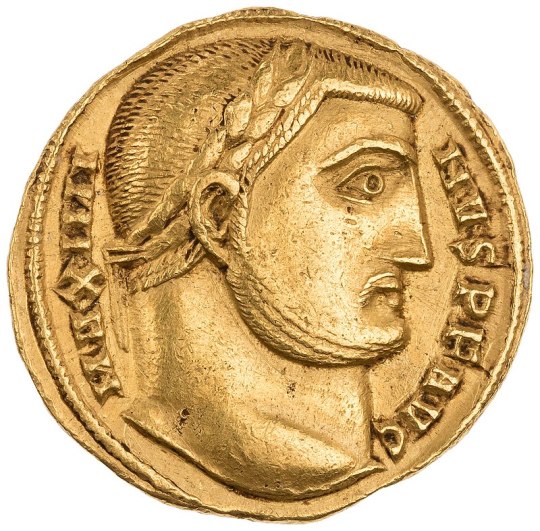
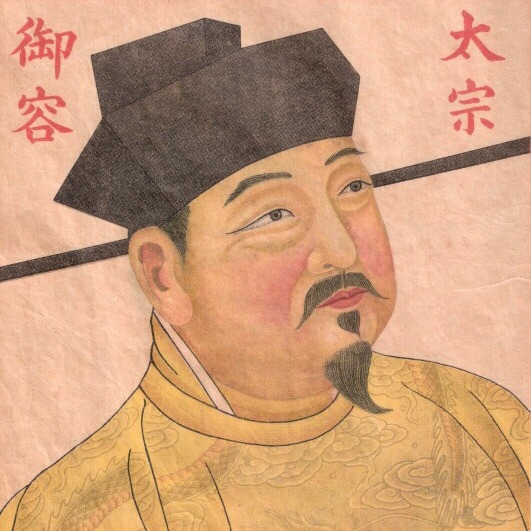
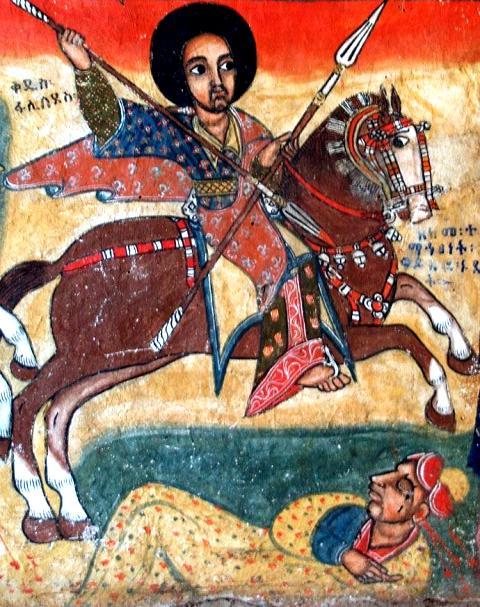
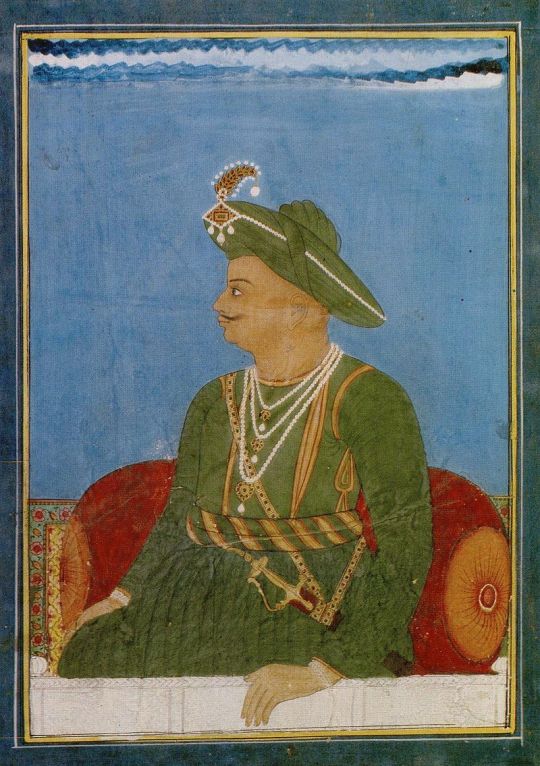
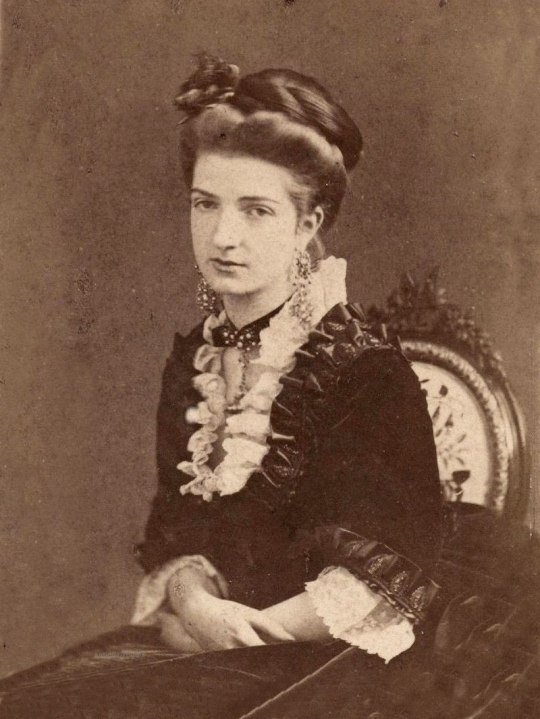





Royal Birthdays for today, November 20th:
Maximinus II, Emperor of Rome, 270
Taizong of Song, Emperor of China, 939
Fasilides, Emperor of Ethiopia, 1603
Tipu Sultan, Ruler of Mysore, 1750
Margherita of Savoy, Queen of Italy, 1851
Maria Letizia Bonaparte, Duchess of Aosta, 1866
Alexandra of Sayn-Wittgenstein-Berleburg, Countess of Pfeil, 1970
Sofia, Princess of Bulgaria, 1999
Umberto, Prince of Bulgaria, 1999
Theodora, Princess of Liechtenstein, 2004
#maximinius ii#taizong of song#tipu sultan#margherita of savoy#Alexandra of Sayn-Wittgenstein-Berleburg#Fasilides#Maria Letizia Bonaparte#sofia of bulgaria#prince umberto#theodora of liechtenstein#long live the queue#royal birthdays
11 notes
·
View notes
Text

The Duchess of Aosta attends the christening of the Prince of Naples at the Quirinal Palace, 1937.
5 notes
·
View notes
Text


Napoleonic room
In the room are collected works directly related to the Napoleonic period, of which Giovanni Battista Sommariva was a protagonist, at first as a man of government, and then as an art collector.
The portraits of some members of Napoleon's family are flanked by a series of prints of the Fast, in other words the story of Bonaparte's deeds in peace and war, from the first Italian campaign of 1796 to the victory of Friedland in 1807 against Tsar Alexander I of Russia.
The engravings reproduce a series of monochrome paintings created by the painter Andrea Appiani in the early nineteenth century for the Palazzo Reale in Milan, which was destroyed during the bombings of the Second World War.
From the Royal Palace of Turin comes the chest of drawers of Giuseppe Maria Bonzanigo, one of the greatest Italian cabinet-makers of the eighteenth century, built in 1789 for the apartment of the Duchess of Aosta.
The artistic taste of the Napoleonic era is reflected in the two large porcelain vases "à fuseaux" produced in Paris around 1815-1830 and decorated with motifs inspired by antiquity, echoing the models of the imperial manufacture of Sevres.
8 notes
·
View notes
Text

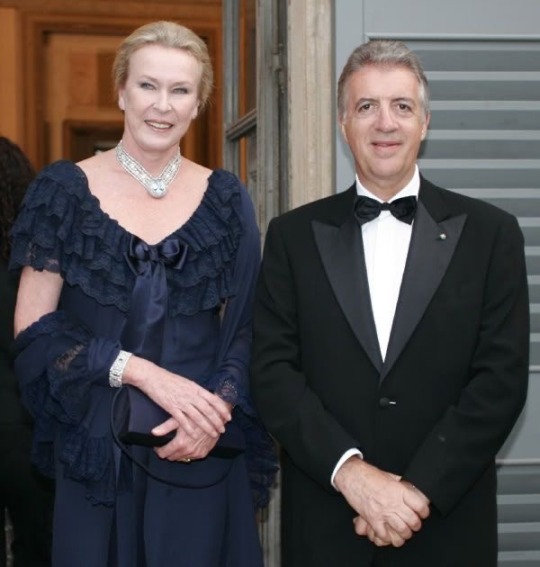
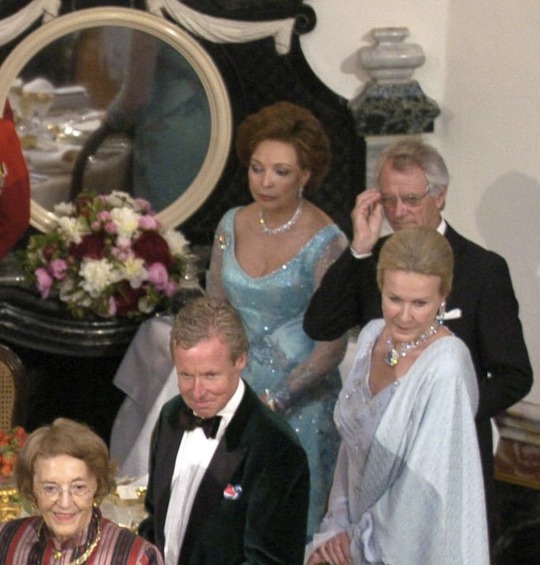

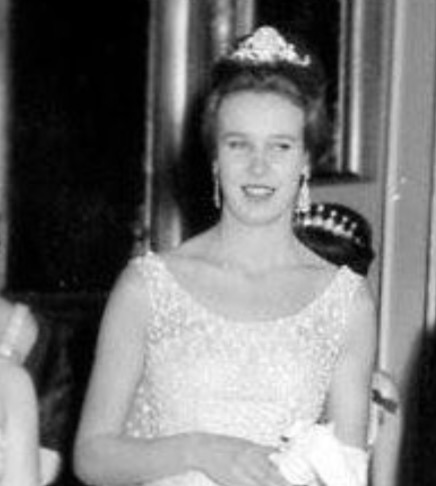



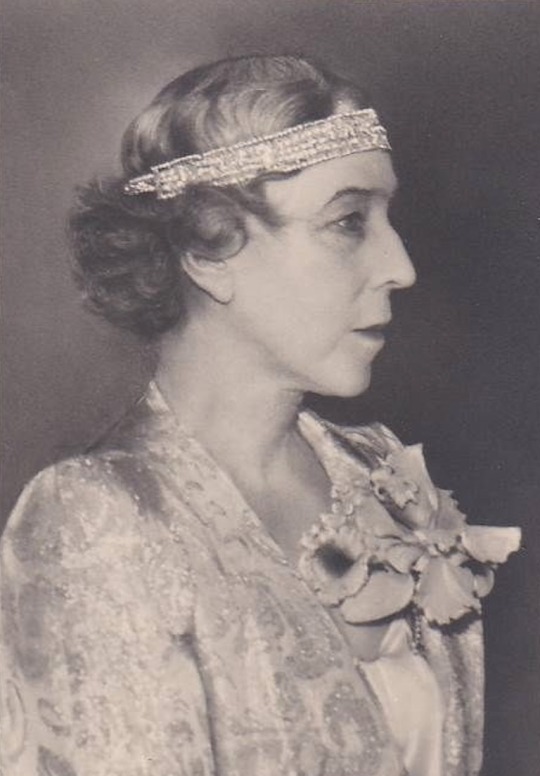
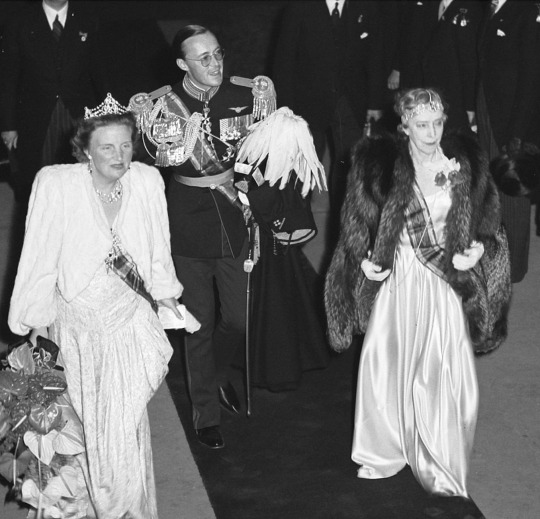

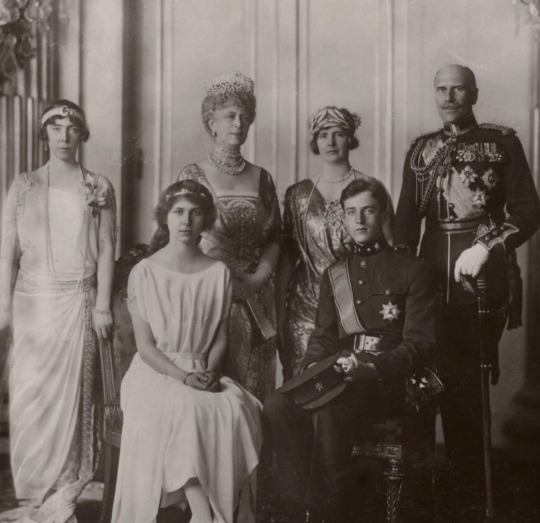

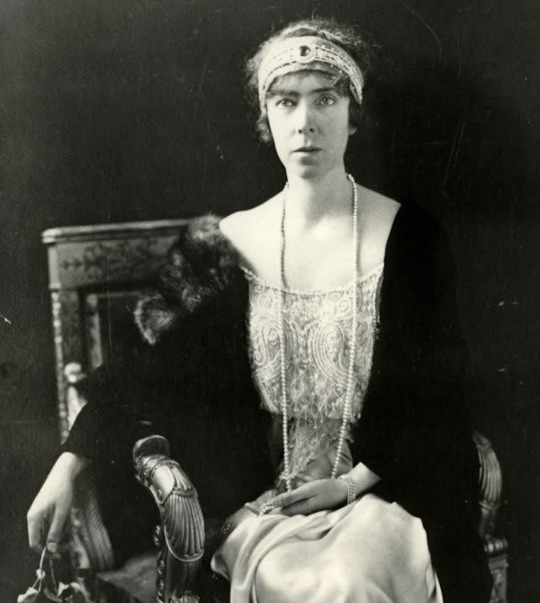
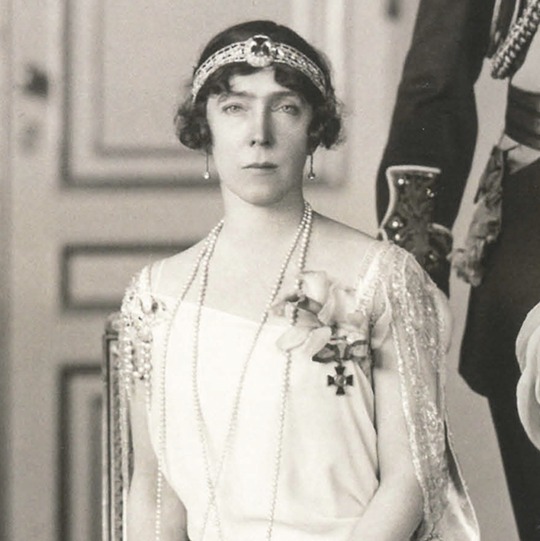





Duchess of Aosta’s Musy Pearl Tiara | Queen Margherita’s Pearl Bracelet Bandeau | Queen Elisabeth of Belgium’s Diamond Bandeau | Pearl and Diamond Ivy Wreath Tiara | Queen Marie Jose’s Sapphire Necklace | Princess de Réthy’s Cartier Flower Tiara
0 notes
Photo

Sua Altezza Reale la Duchessa Elean d'Aosta Princess Hélène of Orléans (French: Princesse Hélène Louise Henriette d'Orléans; 13 June 1871 – 21 January 1951) was a member of the deposed Orléans royal family of France and, by marriage to the head of a cadet branch of the Italian royal family, the Duchess of Aosta. the #sighthound #bulletin
1 note
·
View note
Text

Prince Luigi Amedeo Giuseppe Maria Ferdinando Francesco of Savoy, Duke of the Abruzzi Margherita Maria Teresa Giovanna of Savoy, Queen consort of Italy Princess Hélène Louise Henriette, Duchess of Aosta Prince Umberto Maria Vittorio Amedeo Giuseppe of Savoy, Count of Salemi
Italian vintage postcard
#henriette#luigi#duchess#sepia#giuseppe#count#photography#vintage#vittorio#giovanna#margherita maria teresa giovanna#margherita#postkaart#princess#queen#prince#consort#ansichtskarte#hélène louise henriette#ephemera#carte postale#royalty#postcard#italian#luigi amedeo giuseppe maria ferdinando francesco#postal#abruzzi#salemi#aosta#hlne
3 notes
·
View notes
Photo

Princess Irene, Duchess of Aosta.
She was the fifth child and second daughter of King Constantine I of Greece and his wife, the former Princess Sophie of Prussia. She was a member of the royal families of Greece and Italy. From 1941 to 1943 she was also officially Queen Consort of Croatia.
#kingdom of greece#princess irene of greece#duchess of aosta#greece and denmark#balkans#kingdom of croatia
9 notes
·
View notes
Text
Queen Maria Vittoria of Spain's Pearl Necklace Tiara
The headpiece belonged to the House of Savoy, and is thought to have been created by the court jeweller Musy for Maria Vittoria dal Pozzo on the occasion of her marriage in 1867 to Prince Amadeo, Duke of Aosta, the second son of King Vittorio Emanuele II of Italy.

In 1870 her husband became the King of Spain, making her Queen consort of Spain. Maria Vittoria was known to talk with everyone and was often praised for her intelligence. She developed an interest in her adopted country and spoke Spanish fluently. Maria Vittoria founded a school for the children of washerwomen and an orphanage. She also spent plenty of her private fortune on charitable donations.
The country remained unstable under their rule. They were the victims of an attempted assassination attack. In 1873 Amadeo I abdicated the Spanish throne. They were now no longer King and Queen. They returned to Italy as the Duke and Duchess of Aosta. The political upheaval, combined with the effects of three pregnancies and births, proved too much for Maria Vittoria's health. Suffering from tuberculosis, she died in 1876, in the coastal city of Sanremo. She was only 29.
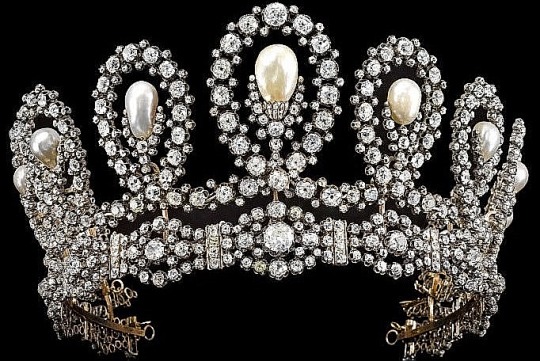
Precisely what happened to the diamond and pearl tiara after Maria Vittoria's death remains unclear. The piece was almost certainly inherited by one of her three sons. Because the wife of the eldest son, the Duke of Aosta, never wore the tiara, that historians assume that it must have gone to one of her other sons, either the Count of Turin or the Duke of the Abruzzi, both of whom died without descendants. It is known that King Umberto II of Italy bought the jewel from one of his cousins to prevent this historic piece from leaving the family collection.
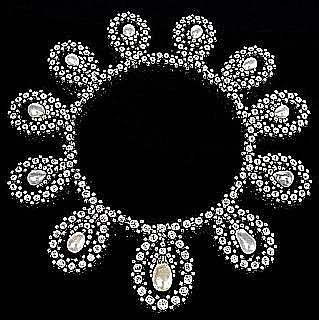
The jewel is composed of graduated scroll motifs set with cushion-shaped, circular- and single-cut diamonds, framing eleven slightly baroque drop-shaped natural pearls. The central pearl is supported by a rose diamond mount. The detachable base of the tiara is composed of cluster and bar motifs set with cushion-shaped diamonds. When the base is removed, the top of the tiara can be worn separately as a necklace. (x)
#women in history#Maria Vittoria dal Pozzo#Queen Maria Victoria of Spain#Duchess of Aosta#Saboya#Amadeo I#spanish history#italian history
14 notes
·
View notes
Photo
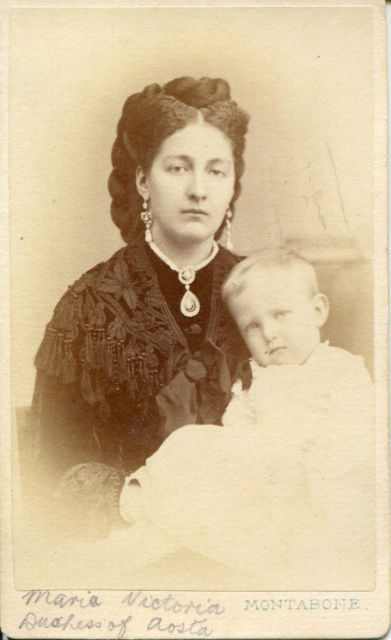
Maria Vittoria, Duchess of Aosta, nee Maria Vittoria dal Pozzo, with her eldest son, Emanuele Filiberto.
#Maria Vittoria dal Pozzo#Duchess of Aosta#Duke of Aosta#House of Savoy#Princess#Royalty#History#Queen of Spain
21 notes
·
View notes
Text
I'm going to try to identify as many of the Greek royal family as I can.
Prince Nikolas, aka the groom, and Queen Anne Marie

Crown Prince Pavlos, Princess Marie Chantal, Prince Constantine-Alexios, and Prince Aristides-Stavros

Princess Alexia, her husband, Carlos, and their daughters, Amelia and Ana Maria

Princess Theodora and her husband, Matthew

Princess Irene, Queen Sofia, and Infanta Cristina

Princess Marina, wife of the late Prince Michael, with her daughter, Princess Alexandra, and son-in-law, Nicolas (I saw her other daughter, Princess Olga, Duchess of Aosta, in the livestream too but I can't find a picture)

youtube
Here's the livestream for the wedding of Prince Nikolaos of Greece and Chrysi Vardinogianni. The stream should start at 5:00pm (in about 10 minutes) and the wedding is at 6:00pm. I'm not sure what to expect as far as a tiara but I'm hoping we see some beautiful jewelry at least.
68 notes
·
View notes
Photo

HRH Princess Irene of Greece and Denmark, Duchess of Aosta wearing her Diamond Lozenge Tiara.
From 1941-1943, she was Queen consort of Croatia, a puppet state of then fascist Germany and Italy.
#princess irene#princess irene of greece#duchess of aosta#queen irene of croatia#queen consort#glucksburg#aosta#tiara#diamond#pearls#diamonds#royalty#kingdom of greece#greece#croatia#jewels#jewelry#jewel
59 notes
·
View notes
Photo

Princess Irene of Greece (Duchess of Aosta); Princess Helen of Romania (born Princess Helen of Greece; Queen Mother of Romania); and the Countess of Törring-Jettenbach (born Princess Elizabeth of Greece), 1934
#royalty#princess irene of greece#princess helen of greece#royal family#princess elizabeth of greece#countess of torring jettenbach#1930s#1934#queen mother of romania#duchess of aosta
75 notes
·
View notes